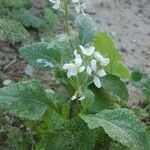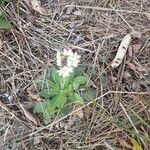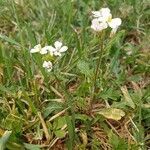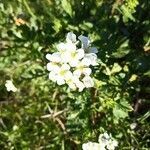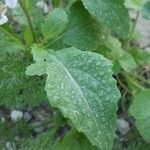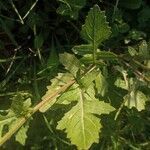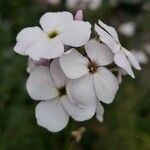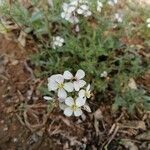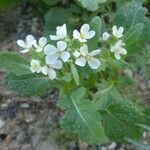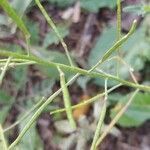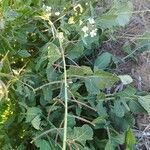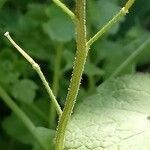A cabbage family herb. It is an annual plant grown from seeds. It forms clumps. It grows 10-40 cm tall. The leaves are deep green and have teeth along the edge. The flowers are white and in flat topped groups.
(q.v.) Might be sought here, but has an evidently emarginate stigma, and 2 rows of seeds in each locule of the fr.
Annual or nearly so, with white, violet-veined pet, is a casual ballast-weed with us.
